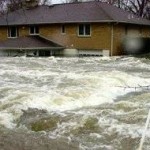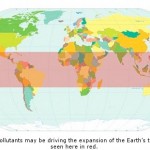
When the Shen Neng 1 ran aground on the Great Barrier Reef off Queensland, carrying 975 tonnes of fuel oil and 65,000 tonnes of coal, reef conservationists and scientists worldwide gave a collective shudder.
The spot where the ship foundered is a restricted area due to its environmental sensitivity. Though ongoing efforts may prevent a major oil spill, the area of reef that the vessel landed on could take decades to recover.
Growing Threats to Reefs
The incident has served to highlight the growing threat to reefs worldwide from human activities. The 2,500 km Great Barrier Reef is the world’s largest reef system, as well as its best-managed. Yet the protections put in place by the Australian government could not prevent Shen Neng 1 from veering off course into restricted waters. With the gross tonnage of international commercial shipping growing by 67% between 1980 and 2003[1], and with most reefs subject to less shipping restrictions than the GBR, such incidents are increasingly likely.
Moreover, commercial shipping is only one of the myriad threats facing the world’s reefs. Others include over-fishing, coastal development, land-based sources such as agricultural runoff, and oil infrastructure. In recent years, the first effects of climate change have also become apparent in the form of bleaching, which can kill coral. Looking ahead, increasing carbon dioxide in the atmosphere is expected to acidify oceans, which will also impact coral health.
Why do reefs matter?
This is not just a problem for the tourism industry and nature lovers. While reefs occupy less than one tenth of one per cent of ocean habitat, they harbor more than a quarter of all marine species[2]. Their presence is vital to local economies, to fisheries, and to global biodiversity. By absorbing wave energy, they also provide storm and erosion protection to coastal communities on several continents and many island nations.
What is the status of the world’s reefs?
This fall WRI will publish Reefs at Risk Revisited, a global report on the health of the world’s coral reefs, documenting the growing range and volume of threats to their survival. An update of our influential 1998 analysis, Reefs at Risk: A Map-Based Indicator of Threats to the World’s Coral Reefs, the new report will employ the most recent high-resolution data to provide a detailed examination of human pressures on coral reefs (including from climate change), implications for reef condition, and projections of associated socioeconomic impacts in coastal communities. It will document the growing range and volume of threats to the world’s reefs as typified in dramatic fashion this week off the coast of Queensland.
How do we protect them?
WRI’s reef project works with reef scientists and managers of marine protected areas to provide the data and information needed to develop effective management plans and policies for reefs. Our new report will make specific, detailed recommendations to national governments, to local planning authorities and to marine park managers on how to counter threats to, and better manage, coral reefs in order to ensure their future place on Earth.

Katie Reytar is a Research Associate at WRI supporting the Coastal Ecosystems Team within the People and Ecosystems Program.
[1] Marielle Christiansen, Kjetil Fagerholt, Bjorn Nygreen, David Ronen, Chapter 4 Maritime Transportation, In: Cynthia Barnhart and Gilbert Laporte, Editor(s), Handbooks in Operations Research and Management Science, Elsevier, 2007, Volume 14, Transportation, Pages 189-284.
[2] Don McAllister, “Status of the World Ocean and its Biodiversity,” Sea Wind 9, no. 4 (1995): 14.
Press Release dated April 7, 2010













